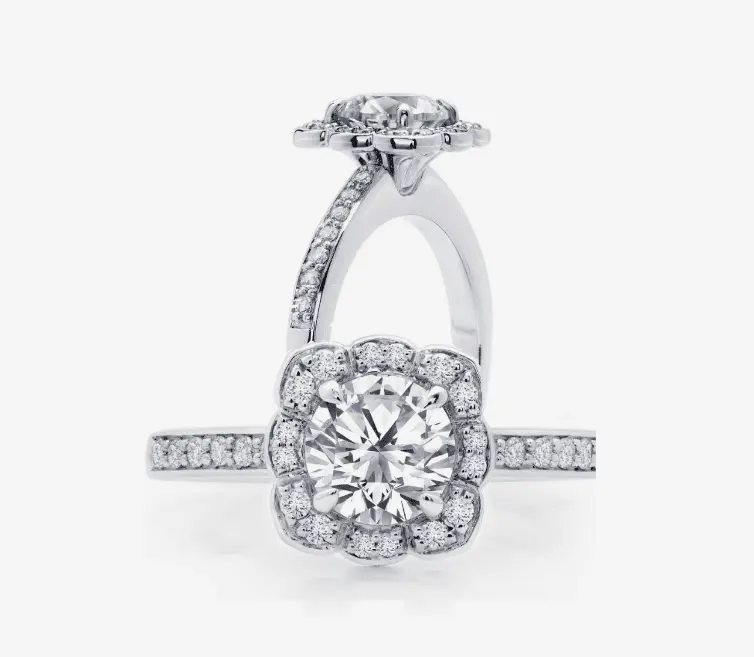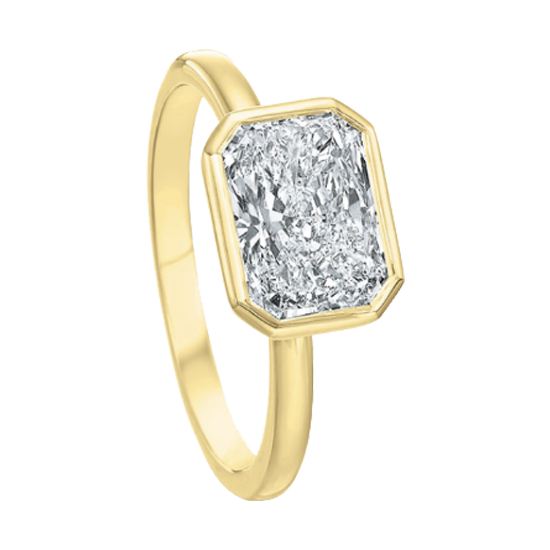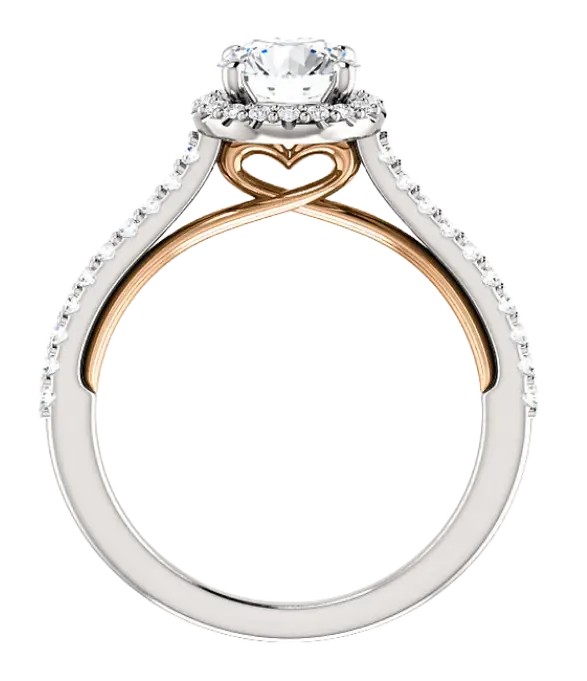Lab-Grown vs. Natural Diamonds: What You Need to Know
In the rapidly changing world of fine jewellery, diamonds remain a sign of love and commitment. However, the introduction of lab-grown diamonds has added some element of newness to this millennia-old tradition. At Serli & Siroan, we understand that choosing between lab-grown vs natural diamonds touches on values both personal and profound. If you’re a fan of the historical appeal of natural diamonds or the innovative sustainability of lab-grown counterparts, you’ve come to the right place!

What Are Lab-Grown Diamonds?
Lab-grown diamonds come out of man’s ingenuity as opposed to geological patience. These stones are formed in the high-pressure chambers replicating the Earth’s crucible in which tumbling carbon atoms turn into diamond lattices through exacting measures.
Unlike their imitation counterparts—cubic zirconia or moissanite—lab-created diamonds share identical physical and chemical properties with mined ones. They fracture light with the same adamantine brilliance. They resist scratches with identical hardness. Under a jeweller’s loupe, only specialized equipment can distinguish their origin story.
The paradox lies in their simultaneous uniqueness and sameness. Each lab diamond contains microscopic birthmarks from its creation—distinctive inclusions and growth patterns as singular as fingerprints. Yet they remain chemically indistinguishable from their earth-formed twins.
What truly separates them isn’t composition but context. Their creation sidesteps the environmental disruption of traditional mining—no massive pits carved into landscapes, no tons of earth displaced for carats of sparkle. They arrive with lighter carbon footprints and cleaner provenance stories.
For wearers, they offer an ethical clarity that sometimes outshines their optical brilliance—beauty without the shadows of environmental harm or human exploitation that haunt the traditional diamond trade.
What Are Natural Diamonds?
Natural diamonds are geological wonders created deep in the earth’s mantle under extreme pressures and high temperatures. These precious gems formed between one and three billion years ago as they slowly crystallized in the depths of 90-120 miles below the surface of the earth before the volcanic eruptions brought them up closer to the surface, where they could be found and mined.
Every natural diamond has its specific fingerprint of internal characteristics – microscopic inclusions and growth patterns that hold a story of its ancient process of creation. Such uniqueness means that there are absolutely no two diamonds in nature that are exactly the same, each having an inherent character and delicate beauty.
For centuries, these gems have been the representation of everlasting love and commitment, no wonder, due to their incredible journey and scarcity. It is this deep-rooted connection to the history of this planet – knowing that the stone that adorns your finger was created in nature, millions of years before there was any human civilization – is what makes natural diamonds so alluring traditionally.
Key Differences Between Lab - Grown
and Natural Diamonds
| Aspect | Lab-Grown Diamonds | Natural Diamonds |
| Origin | Created in controlled laboratory settings over weeks or months | Formed naturally deep within the Earth over billions of years |
| Cost | Typically 30-50% less expensive than comparable natural diamonds | Premium pricing reflecting rarity and traditional value |
| Environmental Impact | Smaller carbon footprint, minimal land disruption | Mining requires more extensive land use and energy resources |
| Rarity | Can be produced in larger quantities with consistent quality | Inherently rare and becoming increasingly scarcer |
| Tradition | Newer alternative with modern appeal | Thousands of years of cultural and historical significance |
| Resale Value | Lower retention of value in secondary markets | Stronger potential to retain value over time |
| Availability | Wider selection of sizes and quality grades readily available | Higher-quality larger stones are increasingly rare |
Pros and Cons of Lab-Grown Diamonds
Pros:
- More affordable—often 30-50% less than natural diamonds
- Environmentally friendlier with a smaller carbon footprint
- Guaranteed conflict-free sourcing
- Identical physical and optical properties to natural diamonds
- Comes in a large assortment of sizes and quality grades
- Ideal for lovers of innovation and sustainability
Cons:
- Significantly lower resale value compared to natural diamonds
- Lacks the historical prestige and legacy of natural diamonds
- Mass production capabilities may diminish the perception of specialness
- Newer to market with less established tradition
- May not appreciate in value over time
Pros and Cons of Natural Diamonds
Pros:
- Each stone has unique characteristics and microscopic inclusions
- Strong connection to tradition and historical symbolism
- Better potential to maintain or increase in value over time
- Limited and decreasing global supply enhances rarity
- Carries the mystique of being formed through ancient natural processes
- Often viewed as more prestigious for heirloom pieces
Cons:
- Significantly higher cost for comparable quality and size
- Environmental concerns related to mining practices
- Potential ethical considerations depending on origin
- Higher premium for completely flawless or exceptionally coloured stones
- Increased scrutiny around sourcing and certification
Are Lab-Grown Diamonds a Good Investment?
When speaking about the investment side of any diamond purchase, one must differentiate between financial and emotional value. Natural diamonds have traditionally shown higher resale value retention, but even they generally go for less than their purchase price on the secondary market.
Lab-created diamonds depreciate more once they are bought. Unlike natural diamonds with a finite and deteriorating supply, the production capability for lab-grown diamonds continues to grow.
Nevertheless, an investment should not be the main purpose of a diamond engagement ring or a wedding band. These pieces have great emotional significance, which defies market valuations. Many couples opt for lab-grown diamonds because they resonate with their value of sustainability and affordability, considering what the ring represents in their relationship rather than how much the stone has the potential to sell for.
Lab-grown diamonds are a great deal for those who are concerned about budget efficiency and ethical considerations. If heritage, tradition, and possible value maintenance are of more importance for your choice, natural diamonds may be more appropriate to meet these priorities.
How to Choose Between Lab-Grown and Natural Diamonds
The perfect diamond choice ultimately depends on what matters most to you and your partner. Look at the differences between lab and natural diamonds and consider these factors when making your decision:
Budget
When you decide to go for lab-created diamonds, you have the opportunity to benefit from maximized size and quality for your money, which, more often than not, would enable you to afford a larger stone with better clarity and colour than if you were to purchase a natural diamond. Imagine that stunning 1.5-carat center stone, rather than the 1-carat, yet without busting the budget.
Sustainability Values
If the environmental impact on the world’s resources is one of your prime considerations in purchases, the lab-created diamonds normally consume less energy, water, and land to mine. Many couples find incredible fulfillment in having their symbol of love resonate with their care for the planet.

Tradition and Sentiment
Consider whether the ancient origins and natural formation story of mined diamonds speak to your sense of romance and tradition. Some feel an emotional connection to wearing something formed through the earth’s natural processes billions of years ago, carrying whispers of time on their fingers.
Long-term Plans
Think about whether you view this purchase as a potential family heirloom or investment. Natural diamonds typically maintain stronger value retention, though both choices can become treasured family pieces passed through generations, each carrying your unique love story forward.
Remember that neither choice is inherently superior—both lab-grown and natural diamonds are genuine expressions of commitment. The “right” diamond is simply the one that resonates most deeply with your personal values, aesthetic preferences, and relationship journey.

Frequently Asked Questions
Absolutely. Lab-created diamonds have the same chemical formulas, crystal and optical properties as natural ones. They are real diamonds in every scientific sense – the only thing is their origin.
To the naked eye, they cannot be distinguished from each other. Even professional jewellers require specialized equipment to identify the subtle growth pattern differences. Both lab-grown and natural diamonds come with certification indicating their origin.
Yes, lab-grown diamonds are cheaper than natural ones and cost 30-50% less for approximately equal size and quality. Such a difference in price makes it possible for a lot of couples to choose bigger or better quality stones within their means.
Lab-grown diamonds do have resale value, though generally lower than natural diamonds. Their value retention is currently less predictable as the market continues to evolve with increased production capabilities.
Lab-grown diamonds by design have a smaller environmental impact than natural diamonds, with less energy, water, and land used. More and more laboratories are now embracing the use of renewable energy sources in their production.
Natural diamonds attract a premium price due to scarcity, a complex system of extraction and distribution networks, restricted supply and dominance of the market, as well as the traditional prestige value of olden natural origin.
Absolutely! Lab-created diamonds can be an excellent option for engagement rings for modern couples. What matters the most is having a ring that’s compatible with your values, inclinations and budget, while emphasizing your commitment to one another.

Get in Touch
Loved one of the styles above but want it customized. Email us below with the style, your desired metal and gemstone colour and we will make it happen!
